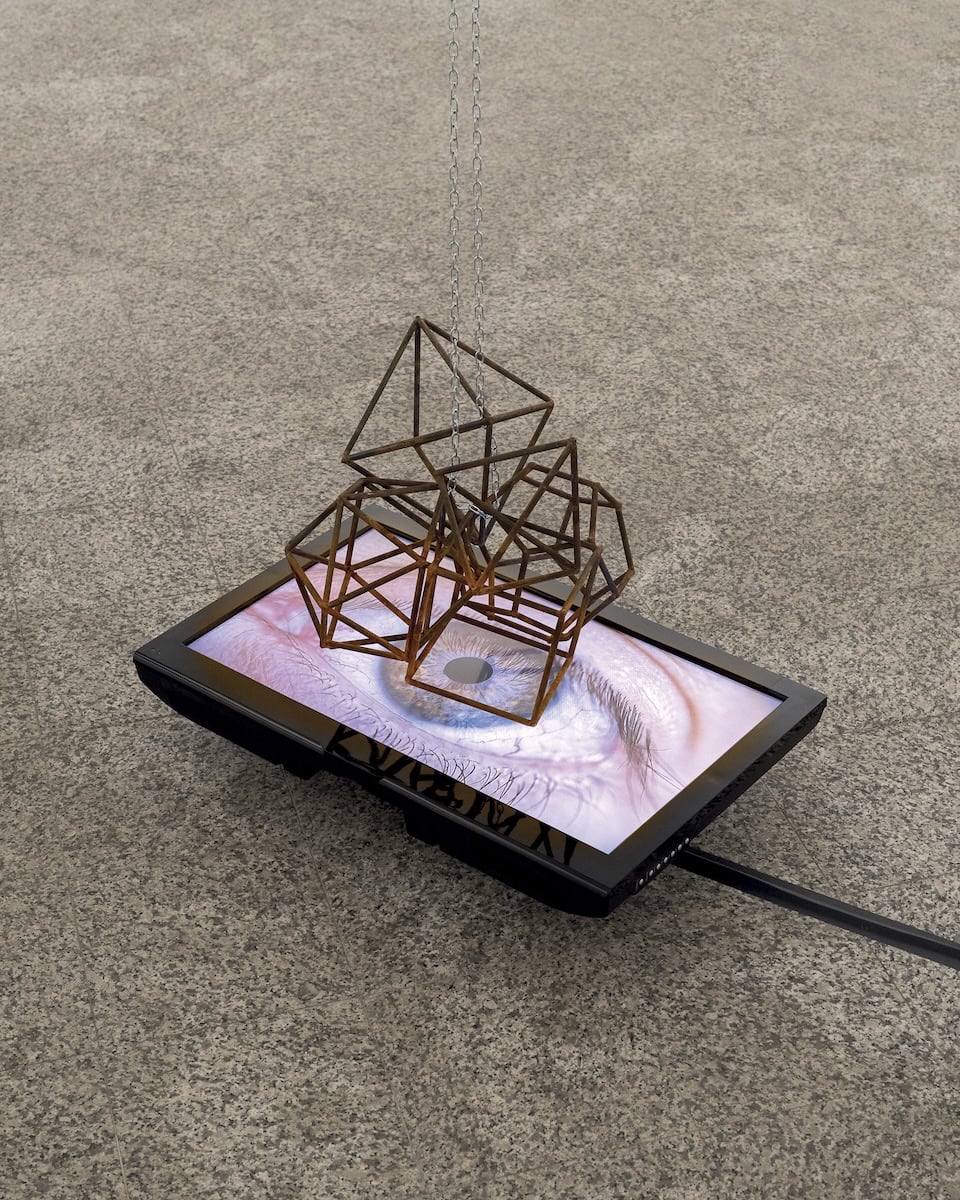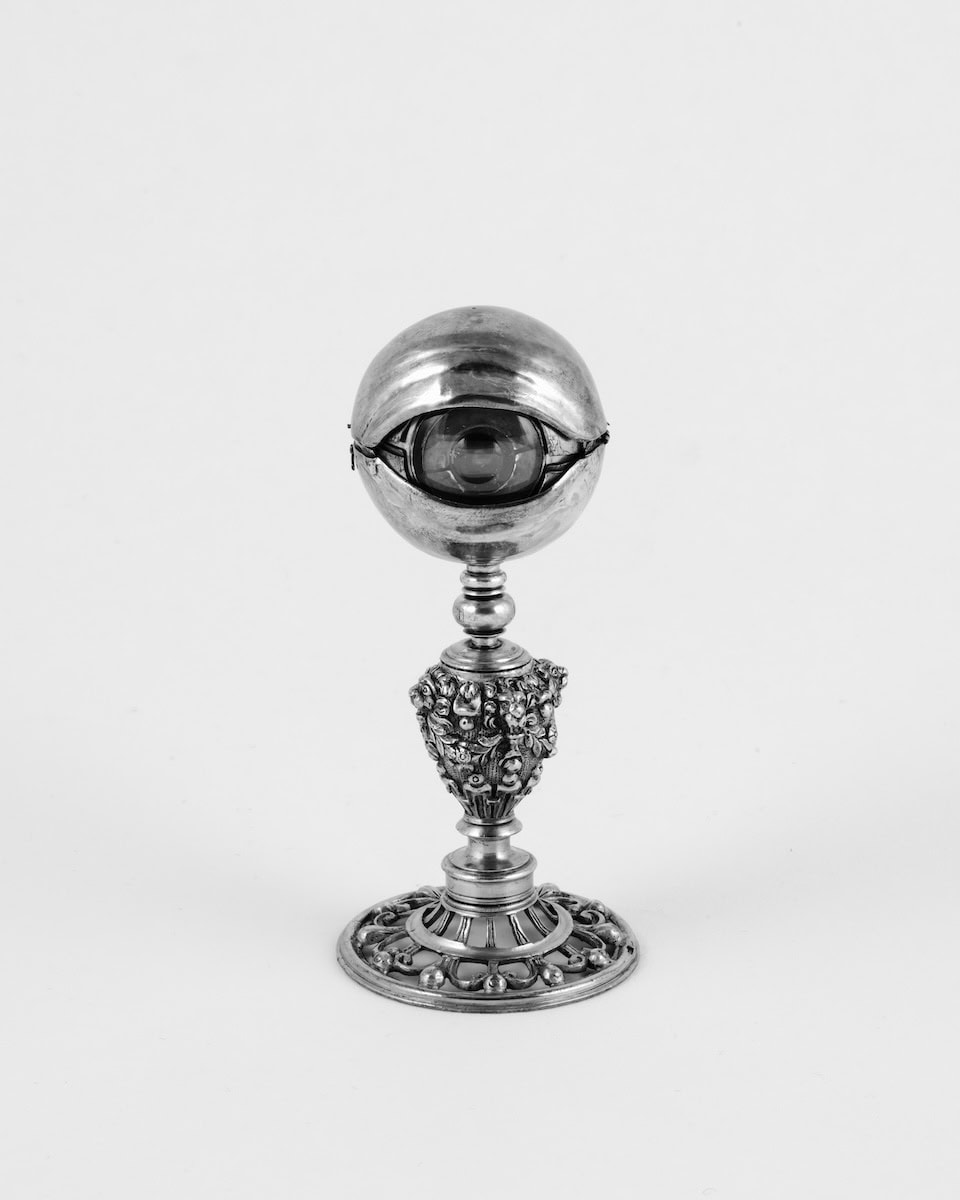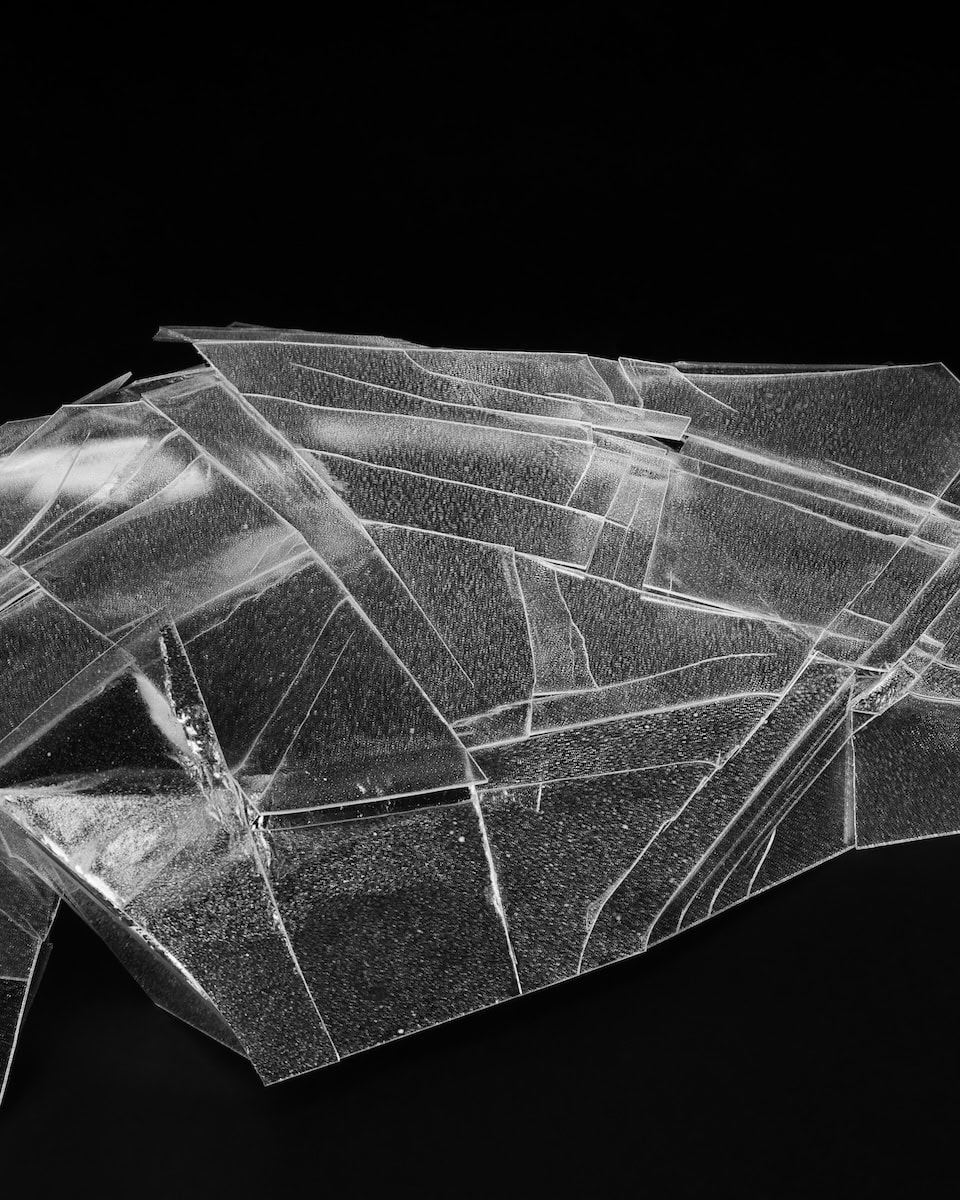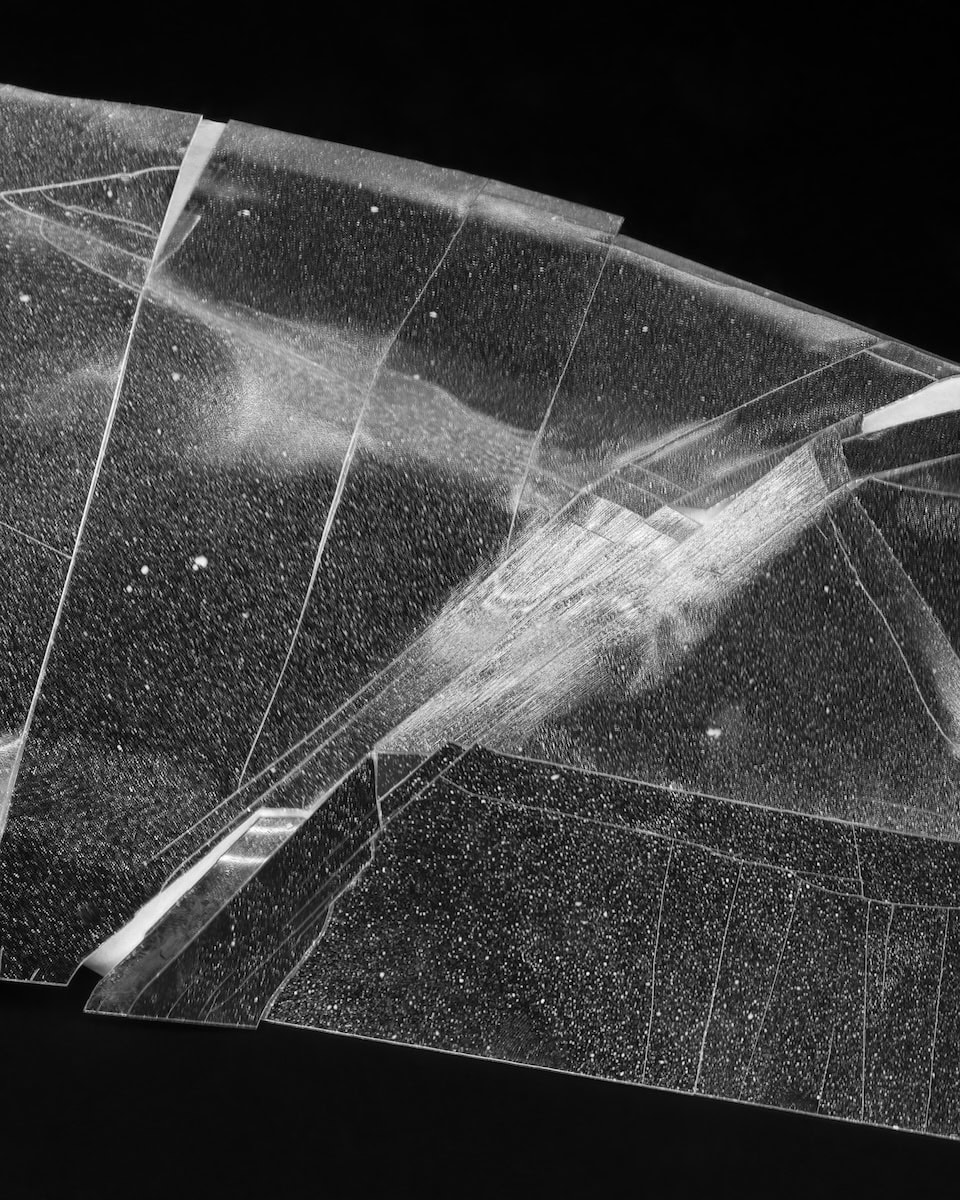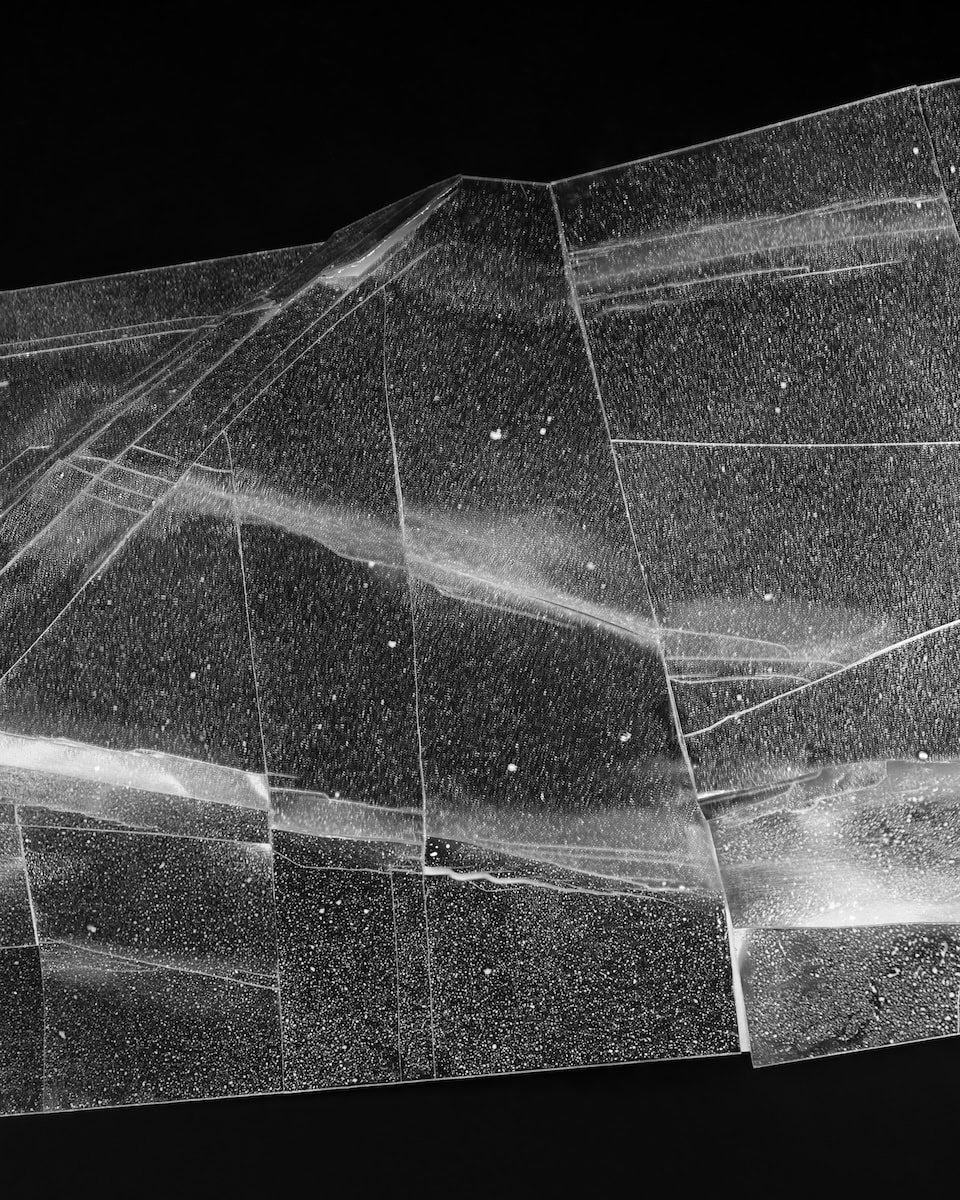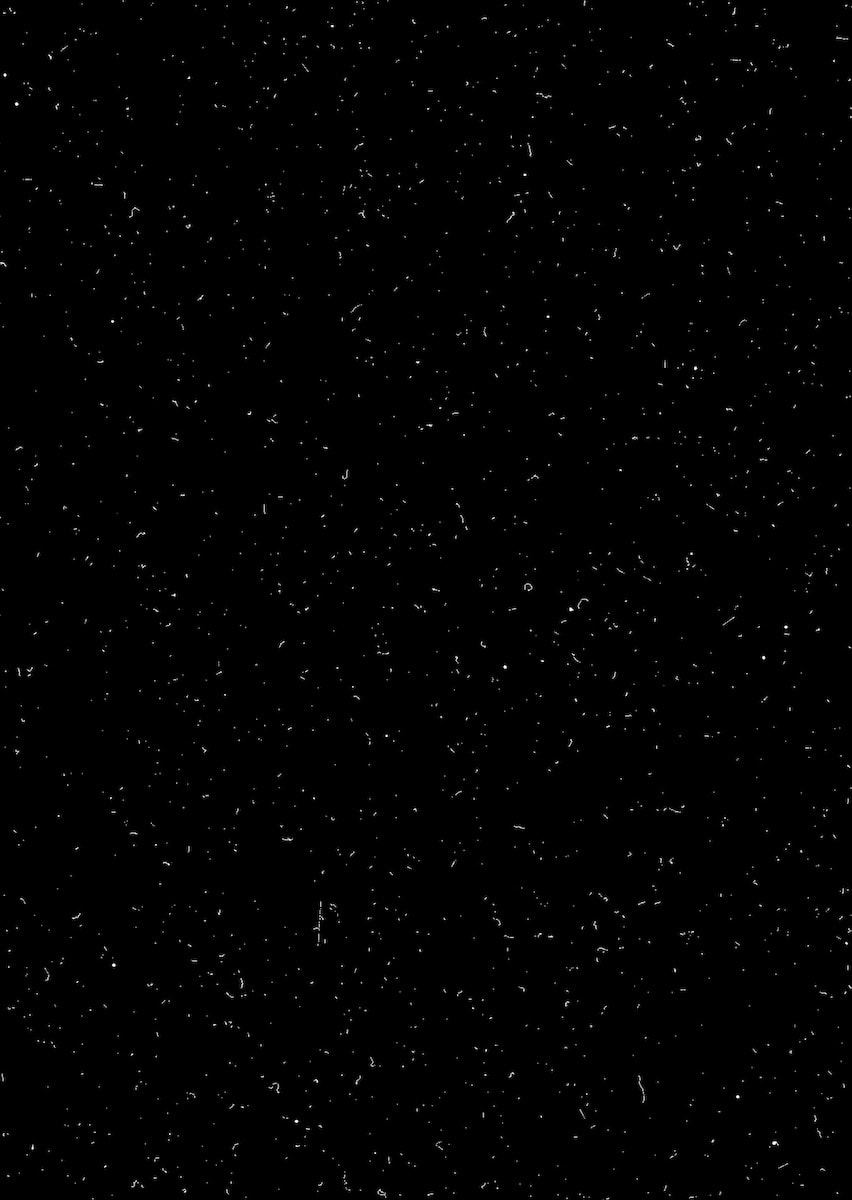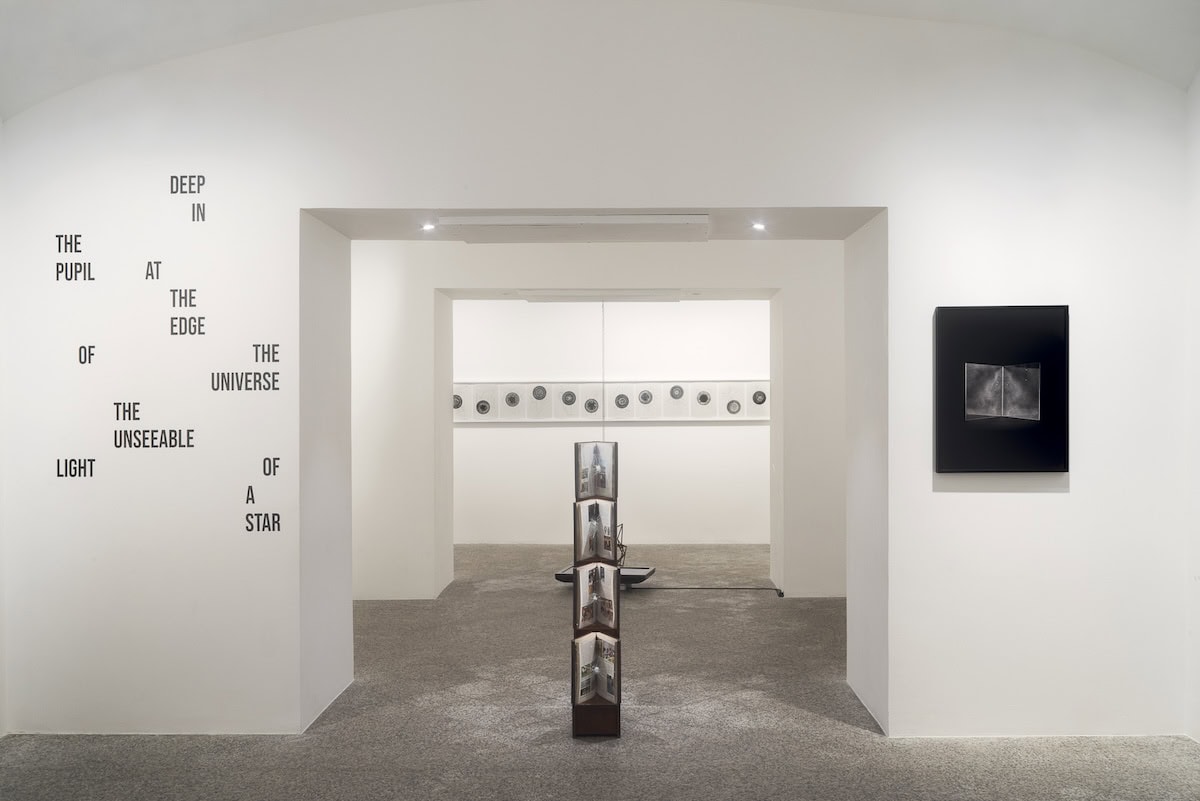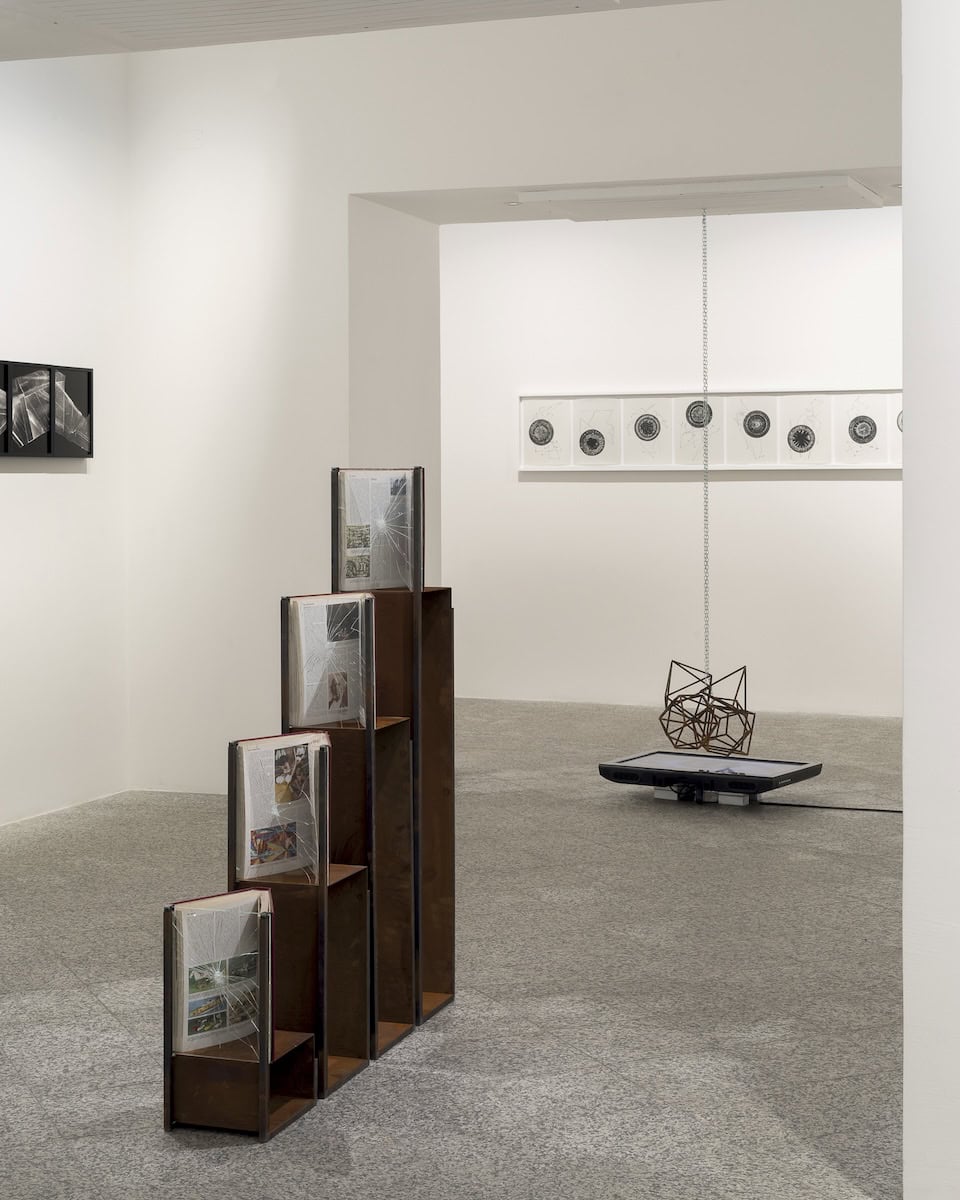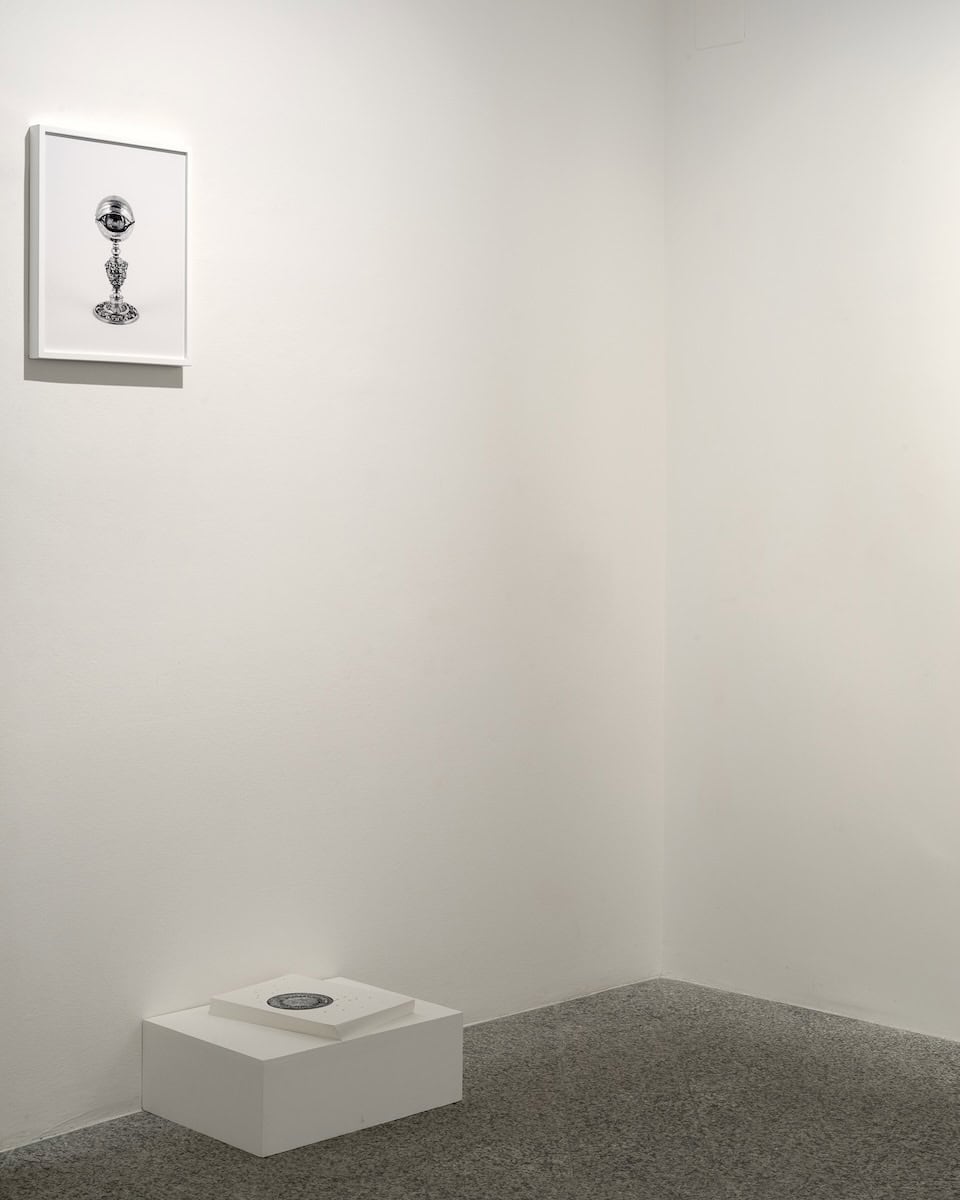There is a liminal space, a web of conflicts and latent possibilities, between that which can be visually perceived and that which our senses fail to grasp; a suspended threshold that is not only physical but mental, which stimulates a transition into new levels of knowledge. Luca Spano’s After the Last Image explores the biological and technological limits of sight, examining the relationship between the visible and invisible, and in particular the grey area between the two–the last known point, the border zone whose mystery invites us to discover more.
Ilaria Sponda: What’s the idea behind After the Last Image? How did this project start and how has it been developed supposing that it stands as an open-ended research?
Luca Spano: Thank you for your question! I’d need hundreds of papyri to answer your input. After the Last Image started 3 years ago, in 2020. It’s a project that searches for the limits of seeing, thus what happens when we encounter difficulties of visual perceptions. “Seeing” is to be intended in an expanded form, not just in relation to its technological and biological acceptations, although pivotal in my work. The importance of sight comes to the surface when it becomes absent. Seeing is related to knowledge. There’s indeed a correlation between knowing and seeing. In religion and science, there’s a form of reliability attached to the act of seeing. If we think of Hinduism, its ‘Vedas–a large body of religious texts originating in ancient India–are called so from Sanskrit ‘veda’, literally ‘knowledge’, especially ‘sacred knowledge’, from root vid- ‘to know’, from Proto-Indian-European root *weid- “to see”. Not to mention, science is the act of researching the unseeable. Whether it does it through data collection, detection or by direct observation, its goal is to sort of make tangible the intangible, yet unseeable reality.
IS: What kind of synergies have come about during your project development?
LS: This project enabled me to collaborate with various institutions and researchers. It enabled me to have an ethnographic approach. Observation has been key to my practice together with dialogues with scientists and researchers from institutes such as the Fair/GSI, the Kunsthistorisches Institut in Florence, Italy, the Deutsches Optisches Museum in Jena, and Turin’s Polytechnic University among others. I had conversations with researchers with the aim of building a bridge between science and art, which are truly close–not in the sense that they are identical but they do share many similarities. From these dialogues, languages, and expressions came about to describe what cannot be seen.
IS: What form has your project taken?
LS: After the Last Image was an exhibition at MAN Museum in Nuoro, curated by Elisabetta Masala. The exhibition was supported by the prize Strategia Fotografia 2022, promoted by the Direzione Generale Creatività Contemporanea of the Italian Ministry of Culture. Nonetheless, this project has resulted in a publication edited by MOUSSE which features a curatorial text By Elisabetta Masala, a preface by the Museum director Chiara Gatti, a conversation between me and a person who was born blind Giovanna Corraine, and contributions by the aforementioned researchers, that talk about the concept of ‘image’ through the lens of their disciplines, rather than my work.
IS: Where does the term ‘last image’ come from? What’s the last image that has inspired your research?
LS: Well, this is a question I often ask myself. I have some theories. When you’re immersed in research you often lose the focal point. The true motivations kind of fade. It’s probably a question that I have since I started playing with images when I was 16 years old and I only had my father’s camera in my hands. I guess live in the fear of losing my sight one day. Shapes and colors will then fade eventually. This fear leads me to investigate other worlds linked to images in a broader sense. Tactile images, and sonorous images, are for example other kinds of images. I’m currently working with various institutes of blind people as I’m interested in exploring what’s the idea of an expanded image can be. Just think that touch activate our visual cortex, creating forms of images. A second motivation that gave rise to my research question is the fact that we’re living in a hyperreality, to quote Jean Baudrillard, a world where images come before reality. As Slavoj Žižek’s asserts when discussing 9/11 in his book The Desert of the Real (2000), the real question we should ask ourselves is “where have I already seen it?”. Images are capable of building up reality.
IS: What’s the last image that has inspired your research?
LS: It’s probably not something still but a process. The last image is not based on an absence, on a referent I can’t anymore see but rather on a surplus. I could explain it through a metaphor. A looping déjà vu that repeats itself. The multiplication of representation cancels representation itself thus not allowing me to see. Nowadays, for example, Instagram creates a constant waterfall of images, a reverse fall that brings the water upwards and that annuls narrative forms. Algorithms create self-referentiality. There’s a game of repetition. Information, thus knowledge is then annihilated. This I’d say is the last image for me.
IS: Is there still value in traditional, photographic images?
LS: There’s for sure. Today an image is a kind of construction brick. Everything we are surrounded by is preceded by an image. This is a value to comprehend in order to give meaning to this flux of images. The fact of being able to understand the value of images in contemporary society is relevant to breaking the grid and being able to see the structure behind it. Breaking this loop of repetition of glitches, gelatin silver prints, selfies–any image is thus the same, it’s their substance that changes. Image per se is an iridescent being. I see images nowadays as something in a neoteny state ( I here steal a concept from biology). Neoteny is a state where the living being reaches a maturity in certain aspects of its evolution, still being in a larval state. It is the state that can lead to metamorphosis. Photography is in this state for me now. A larva that can generate its own metamorphosis. A young medium born not even 200 years ago, quickly grown but still in a larval form. Artist and writer William S. Burroughs asserted that a fish looks at water and finds air, in simple words. This means that in the moment that a fish thinks he’s supposed to reach for water, it encounters the soil and it has a metamorphosis, losing the gills through an unexpected step of evolution. Photography was born with the attempt to represent reality more than painting. It has lost this objective, becoming a hybrid, and a dispositive in between reality and fiction.
Luca Spano (1982, IT) is a multidisciplinary artist. He studied between Europe and the United States, holding a BA in Communication Sciences from La Sapienza in Rome, and a MA in photography from the London College of Communication in London, and an MFA in visual arts from Cornell University in Ithaca (US). His work has been exhibited internationally in museums, galleries and festivals such as: Triennale in Milan, MACRO (Museum of Contemporary Art in Rome), BredaPhoto Festival (NL), Malta Festival (PL), Savvy Contemporary in Berlin (DE), Luis Adelantado Gallery (ES), Paolo Erbetta Gallery (IT), Caelum Gallery in New York, Institute of Italian Culture in Paris, Institute of Italian Culture in Hamburg, and the Higher Regional Ethnographic Institute.
